Paraspinal Muscle – Anatomy and Exercise
Anatomy:
The paraspinal muscles, sometimes called the erector spinae, are three muscle groups that support your back.
The paraspinal muscles are located on the left and right sides of your spine and are made up of three groups. These include:
a) Iliocostalis
b) Longissimus
c) Spinalis
A) ILIOCOSTALIS MUSCLE:
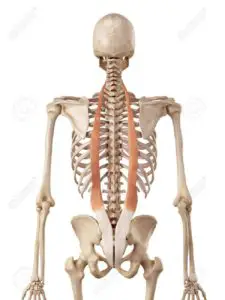
The iliocostalis muscle is the most lateral, or outside, of the three paraspinal muscles.
ORIGIN:
It originates from a broad tendon on the back of the hip bones, the back of the sacrum bone, the ligaments of the sacroiliac joints, and the spinous processes of the lower lumbar vertebra.
INSERTION:
The lumbar portion of the iliocostalis muscle travels upward from the lower area of the pelvis and sacrum to attach onto the lower border of the bottom six or seven ribs, by means of tendons that branch off from the main line.
The thoracic portion also attaches to ribs, but these are the top part of the upper six ribs. This portion also attaches to the back part of the transverse processes of the seventh cervical vertebra. The word cervical refers to the neck.
The cervical portion of the iliocostalis muscle attaches to the back of the transverse processes of the fourth through the seventh cervical vertebrae.
NERVE SUPPLY:
This muscle are innervated by nerves from the dorsal rami of the first cervical nerve down to the fifth lumbar nerve.
ACTION:
This muscle acts in extension of the spine and bends it over to the same side.
B) LONGISSIMUS MUSCLE:
ORIGIN
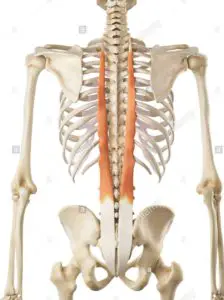
This muscle originates from a broad tendon on the back of the hip bones, the back of the sacrum bone, the ligaments of the sacroiliac joints, and the spinous processes of the lower lumbar vertebra.
INSERTION:
The thoracic portion attaches to the tips of the transverse processes of all the thoracic vertebrae and by muscle branches to the lower nine or ten ribs.
The cervical portion of the longissimus attaches to transverse processes of the second through sixth cervical vertebrae.
The cranial portion attaches to a projection of bone known as the mastoid process, which is located at the back of the skull, right behind the bottom of the ear.
NERVE SUPPLY:
This muscle are innervated by nerves from the dorsal rami of the first cervical nerve down to the fifth lumbar nerve.
ACTION:
This muscle acts in extension of the spine and bends it over to the same side.
C) SPINALIS MUSCLE:
ORIGIN:
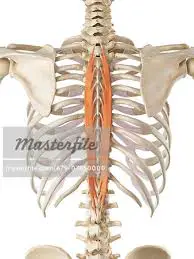
It originates from a broad tendon on the back of the hip bones, the back of the sacrum bone, the ligaments of the sacroiliac joints, and the spinous processes of the lower lumbar vertebra.
INSERTION:
The thoracic portion attaches to the spinous processes of the upper four to eight thoracic vertebrae.
The cervical portion inserts on the spinous process of the second cervical vertebra called the axis, and sometimes on the spinous processes of one or two vertebrae below that.
The capitus portion is often less distinguishable from the cervical portion but functions independently to help rotate, support, tilt, and move the head.
NERVE SUPPLY:
This muscle are innervated by nerves from the dorsal rami of the first cervical nerve down to the fifth lumbar nerve.
ACTION:
This muscle acts in the extension of the spine and bends it over to the same side.
PARASPINAL MUSCLE INJURY:
Paraspinal muscle injury involves damage to the muscles, ligaments, or connective tissues in the lower back. This may take the form of an over-stretch, muscle tear, or rupture which causes inflammation and pain in the affected area. In some cases, the injury may have gone unnoticed at the time but as the tissues inflame and swell they become increasingly more painful.
Symptoms:
- Acute pain with possible sciatic referral into the buttocks and leg.
- Onset may be immediate or 24-48 hours afterwards injury.
- Sharp pain when coughing or sneezing.
- All movements may be restricted, guarded, and painful.
STRETCHING EXERCISE OF PARASPINAL MUSCLE:
1. Seated Lower back Stretch:

- Sit in a chair with knees spread apart.
- Bend forward to the floor.
- A comfortable stretch should be felt in the lower back.
- Hold for 30 seconds.
- Repeat 2 times per set.
2. Standing Backward Bend:
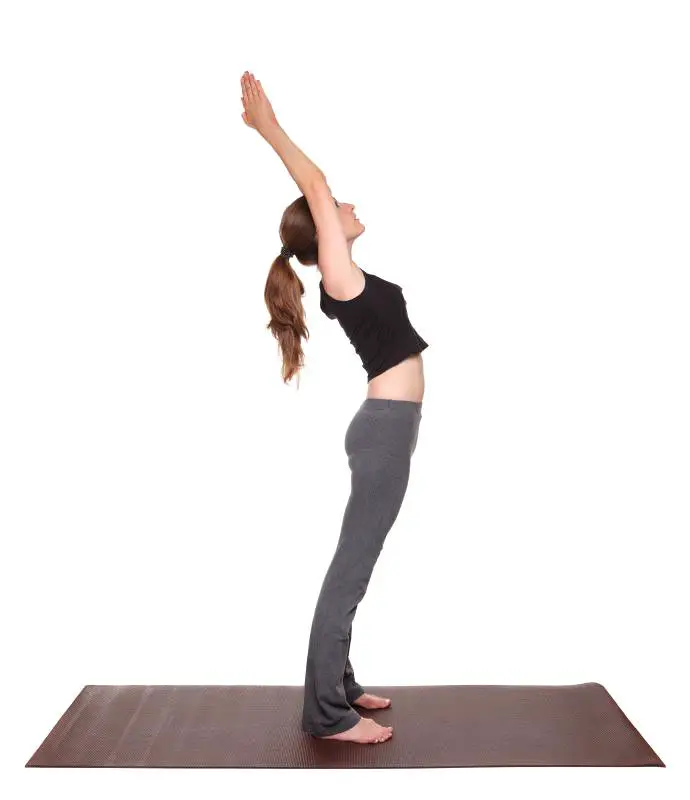
- Stand with both knees apart and hands above the head.
- Arch backward to make the hollow of the back deeper.
- Hold for 30 seconds.
- Repeat 2 times per set.
3. Thoracolumbar Side-Bend:
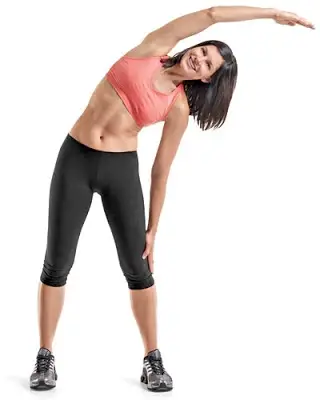
- Reach overhead to the other side with your arm until the stretch is felt.
- Hold 30 seconds.
- Relax.
- Repeat on the opposite side.
- Repeat 2 times per set.
4. Knee to Chest:
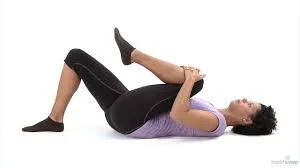
- Lay on the back on the floor with knees bent, and feet flat on the ground.
- Pull one knee gently toward the chest with both hands.
- Hold it there for 5-10 seconds while pressing the spine toward the floor.
- Lower the knee and repeat on the other side.
- Finally, repeat the stretch with both knees.
5. Laying Rotation Stretch:
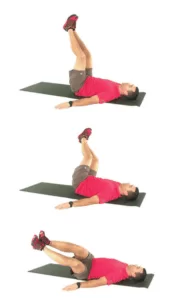
- While lying on the floor, slide the feet toward the hips.
- Both the arms are straight out from the sides, then drop both knees toward the floor on one side.
- Hold for 5 seconds, then slowly bring both knees back up to center.
- Repeat on the other side.
STRENGTHENING EXERCISE OF PARASPINAL MUSCLES:
1. BRIDGING:
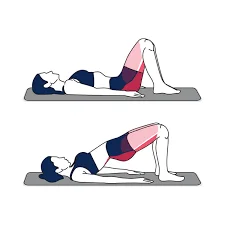
- Lie on the back with the knees bent and the feet on the floor.
- Begin by squeezing the abdominal muscles but be sure not to hold your breath as you perform this.
- Keeping the squeeze, lift the buttocks off the ground and into the air.
- When one is not able to lift any higher, hold the position for 15 seconds before lowering back to the floor.
- Complete five repetitions of the hip bridge, and try to do this exercise once daily.
2. SUPERMAN:
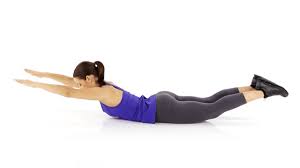
- Lie on your stomach with the arms extended over the head and the knees held straight.
- Without elevating the head off of the ground, lift the left arm and the right leg in the air at the same time.
- Be sure to keep the hips in contact with the floor the entire time.
- Hold the arm and leg up for three to five seconds before lowering them down and repeating the lifts with the opposite arm and leg.
- Repeat the Superman 10 to 20 times per side each day.
3. PRONE BACK EXTENSION:
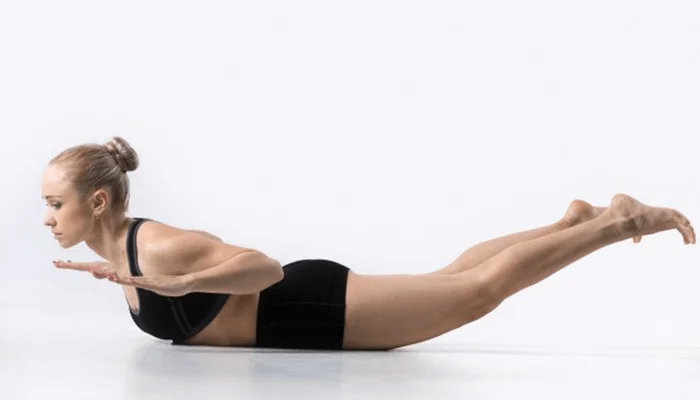
- While lying on the stomach, reach both arms over the head with the palms facing inward toward each other.
- Begin by contracting the stomach muscles.
- Without moving the waist or legs, lift the arms, neck, and chest off of the ground in one smooth motion.
- Be sure not to overextend the spine, and stop if you feel any pain.
- After holding this position for a second or two, lower back down to the ground.
- Repeat three sets of 10 to 15 repetitions of the exercise each day
4. BIRD-DOG EXERCISE:
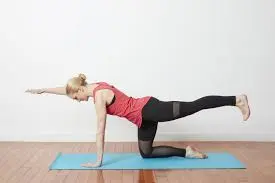
- Get on the floor on your hands and knees. The knees should be directly under the hips and the hands should rest beneath the shoulders.
- Begin by squeezing the stomach muscles and flattening the lower back like the top of a table.
- Without losing this contraction, lift the right arm straight over the head as one extends the left leg behind.
- Hold this position for 15 seconds before returning the extremities to the ground.
- Repeating the lift with the opposite arm and leg. Complete five repetition on each side per day.
5. PLANK:
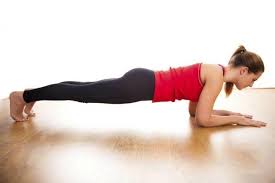
- Lie on the stomach on the forearms, with the elbows beneath the shoulders and both hands clasped together.
- Squeeze the stomach and butt muscles as one lift the waist and knees off of the ground.
- Remember to continue breathing and to keep the lower back flat as one performs this.
- Hold the plank for 30 seconds before returning the body to the ground, and repeat the exercise five times each day.

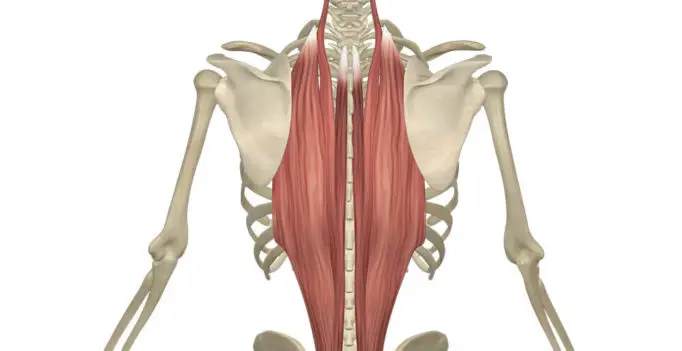

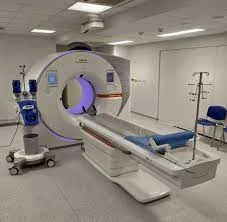
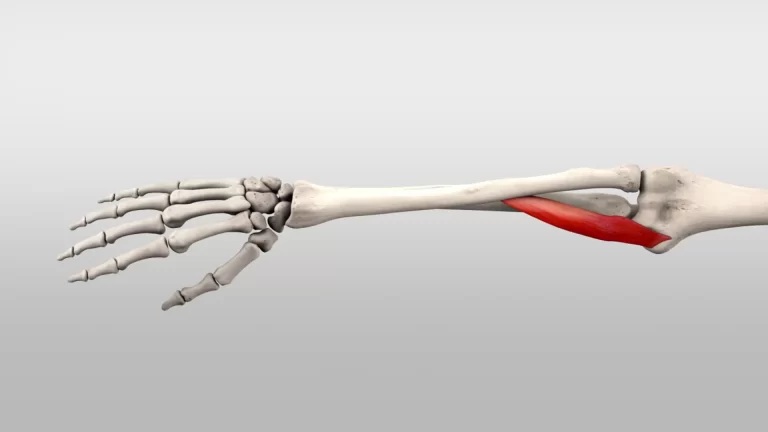
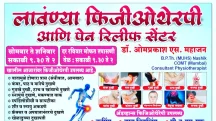
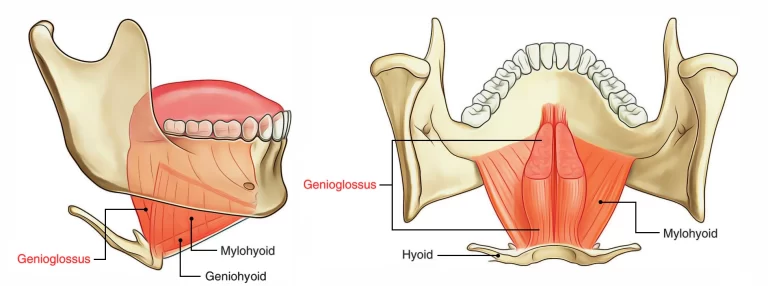
One Comment